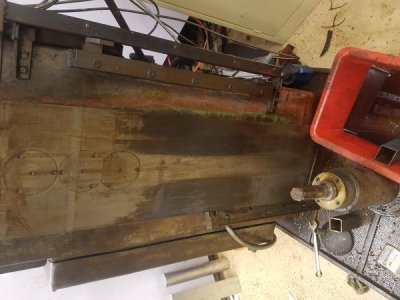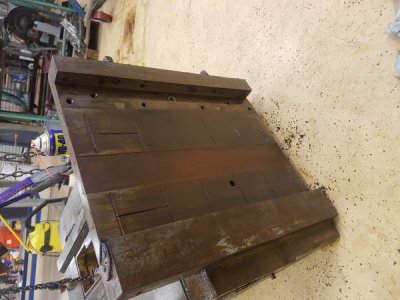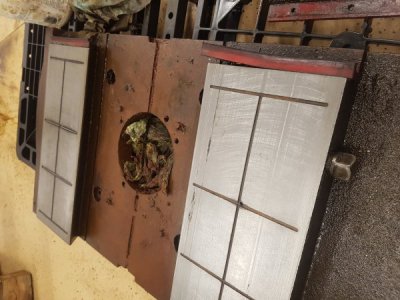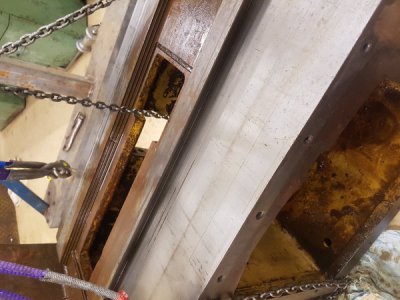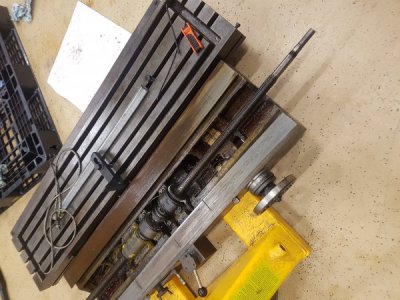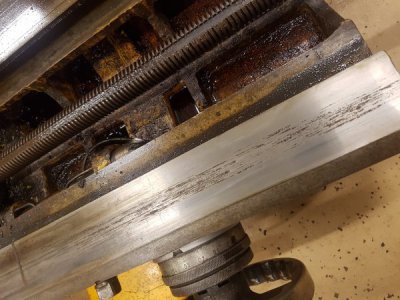- Joined
- May 17, 2015
- Messages
- 165
I am currently in the throws of a complete gear box / knee rebuild of my universal. I have had to completely remove the bed and cross saddle and the pivot saddle, if thats the correct terminology. I never wanted to strip it but in its previous life it has had some not so good repairs and in all honesty im lucky it didnt launch the entire gear box out the side. So after repairing some shafts and replacing the bearings im going to put this giant rubix cube back together.
But in the process of stripping it i have found some damage to the ways from blocked oil holes and it has picked up and gouged the bed. I have a not so precision straight edge and it looks good, i am waiting on 2 new proper precision straight edges to arrive to check thoroughly. I have also ordered a 400mm x 400mm cast iron surface plate. My question is what is the best way to repair the gouges and remove any high spots with out affecting the accuracy of the mill? I have no scraping experience and tbo i have no immediate desire to start, i want to use the mill not work on it. If the ways arent worn badly other than the gouge marks, any suggestions on a repair?
Thanks Str8
But in the process of stripping it i have found some damage to the ways from blocked oil holes and it has picked up and gouged the bed. I have a not so precision straight edge and it looks good, i am waiting on 2 new proper precision straight edges to arrive to check thoroughly. I have also ordered a 400mm x 400mm cast iron surface plate. My question is what is the best way to repair the gouges and remove any high spots with out affecting the accuracy of the mill? I have no scraping experience and tbo i have no immediate desire to start, i want to use the mill not work on it. If the ways arent worn badly other than the gouge marks, any suggestions on a repair?
Thanks Str8

